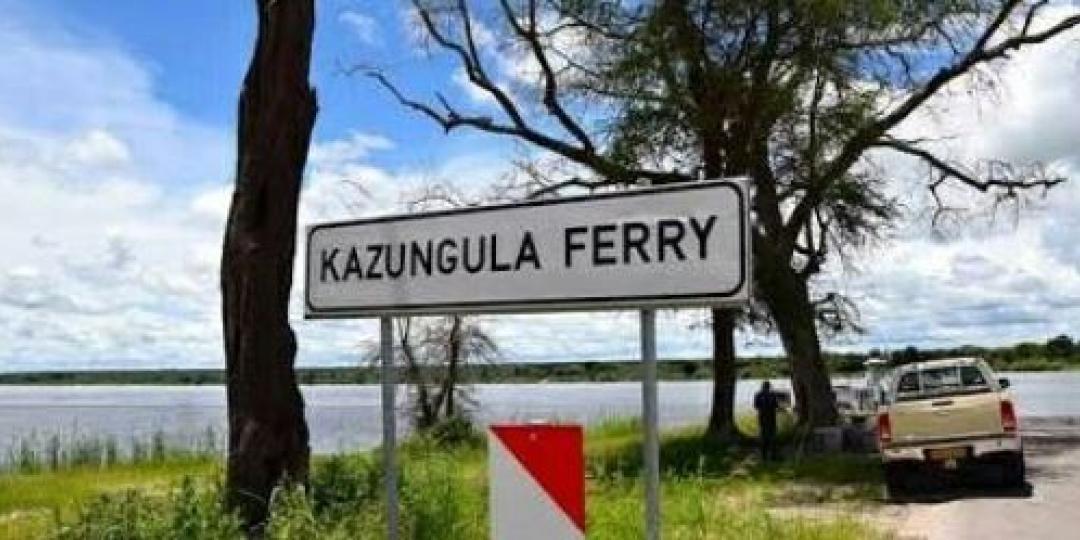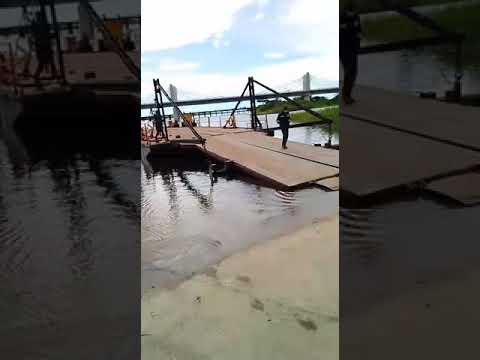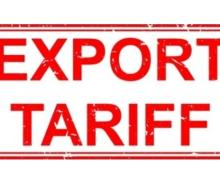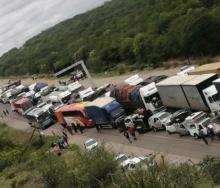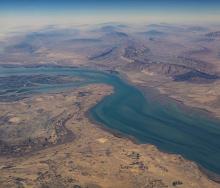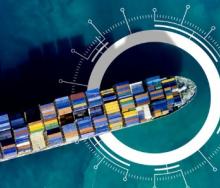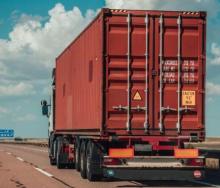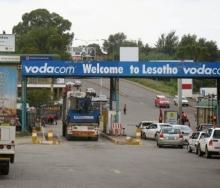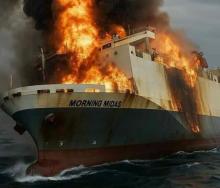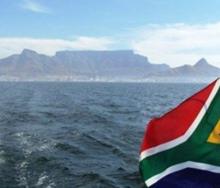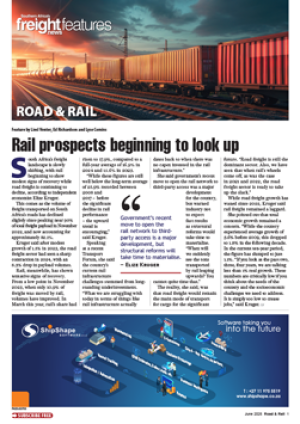With only 18 days remaining before the Vic Falls-Livingstone crossing becomes a no-go zone for road freight following a recent decision by Zambia, the farcical situation at the Kazungula ferry transit at the tip of the Caprivi Strip is not getting any better.
This morning the Transit Assistance Bureau (Transist) reported that of the three pontoons designated to take trucks and other traffic back and forth across the rain-swollen river, only one remained in operation.
A Transist spokesperson reported that one of the pontoons had been out of action for three weeks while another hadn’t carried a load across the river in over a year.
“It limits the amount of trucks that can cross to around 60 per day compared to the usual 180 if all three pontoons are operational.”
Meanwhile, the rising level of the Zambezi, now completely covering the ferry slipways on either side of the river, is making truckers even more fearful of using the water crossing where trucks regularly slip off pontoons.
Last November it happened twice in less than two weeks.
In the meantime, a multimodal marvel of engineering progress takes pride of place in the background – the brand new, but yet to be operationalised, $259.3-million Kazungula Bridge.
Commenting on a video shared by Transist showing the only operational pontoon ferrying two trucks across while the bridge basks in white elephant glory in the background, one transporter quipped: “Maybe they could use the bridge standing next door.”
To which a clearing agent added that it was just there to look good.
Such is the cynicism and frustration of southern African freight representatives who are unable to use one of the continent’s latest logistical linkages.
Meanwhile, fingers keep pointing to Lusaka, to the laissez-faire attitude of officials from President Edgar Lungu’s government.
Its dire fiscal position is well known, and more than one cross-border source to whom Freight News has spoken has said they have it on good authority that Zambia doesn’t have the money to pay Daewoo for completing work on the bridge.
Botswana, for that matter, is said to have paid up.
Zambia’s minister for housing and infrastructure development, Vincent Mwela, has since denied claims that money is still owed to Daewoo.
Meanwhile, supporting facilities for the One Stop Border Post at Kazungula, such as housing – Mwela’s portfolio – remain wholly inadequate.
This is despite the Zambia Revenue Authority’s decision last year to move operations to Kazungula where, besides the bridge, very little infrastructure and amenities exist to support logistics.
Yet, with Zambia’s closure of the Vic Falls-Livingstone crossing to transporters, they clearly want to divert a lot of road freight to Kazungula.
Another glaring delay to the bridge’s opening is the bilateral agreements and statutes of instrument between Zambia and Botswana that remain unsigned – agreements that Mwela and peer ministers from both sides of the border said last December would be imminently signed.
Now, with two bridges across the Zambezi less than 150 kilometres apart – one that will soon be off limits and another that’s just sitting there – transporters are shaking their heads in disbelief.
It doesn’t make sense why the bridge could not be opened in the meantime to assist cross-border road hauliers.
“Don’t forget this is Africa and logic doesn’t always prevail,” the Transist spokesperson said.
WATCH: Traffic across the Zambezi River where Namibia, Zambia, Zimbabwe and Botswana meet is still expected to use the Kazungula ferry, despite the border junction sporting a completed multimodal bridge since last September.
